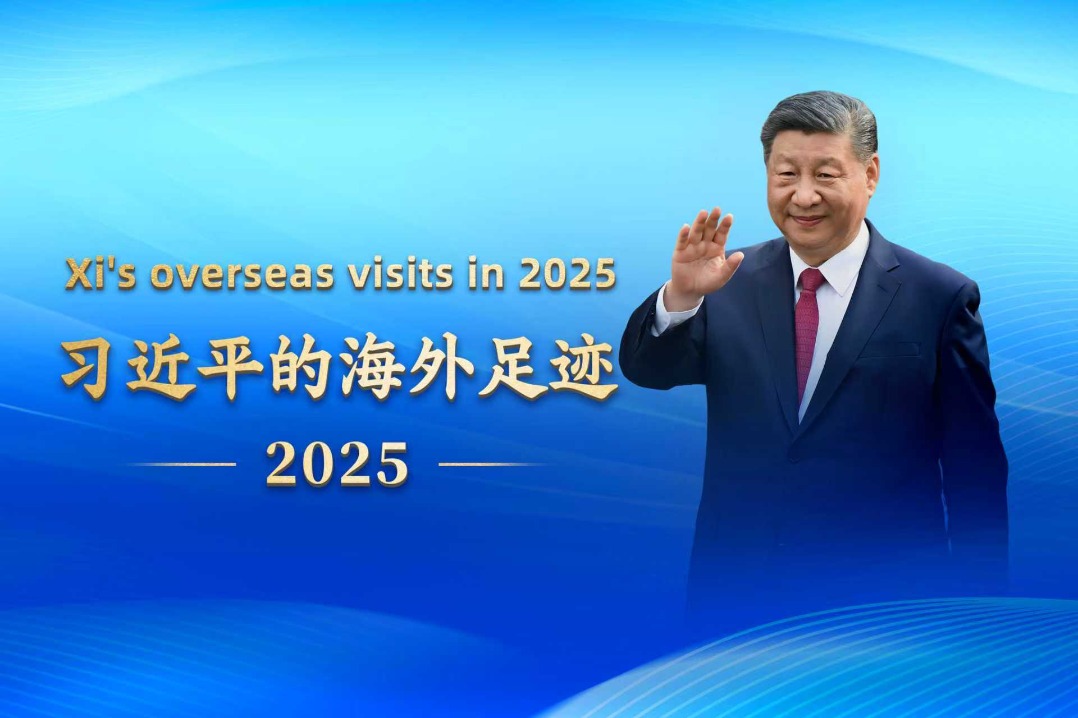China and the World in the New Era
China Daily | Updated: 2019-09-28 10:27
Box 7 Consumption Is Clearly Moving Up Market
Before reform and opening up started in 1978, urban and rural residents in China focused their spending on food and clothing. In 1978, the urban and rural Engel coefficients were as high as 57.5 percent and 67.7 percent. Since 1978, the level of consumption in China has greatly improved, and the cultural life of its people has become richer. In 2010, the urban and rural Engel coefficients fell to 31.9 percent and 37.9 percent. Since the 18th CPC National Congress in 2012, living standards have further improved and great strides have been made towards a moderately prosperous society in all respects. In 2018, the urban and rural Engel coefficients dropped to 27.7 percent and 30.1 percent. The following is a list of number of objects owned per 100 households:
33 cars, 95.3 percent up from 2013,
59.2 motorcycles, 49.9 percent up,
249.1 mobile phones, 22.6 percent up,
109.3 air conditioners, 55.3 percent up,
56.4 range hoods, 32.7 percent up; and
85 water heaters, 32.4 percent up.
China is the most attractive investment destination. It has a workforce of almost 900 million, and more than 700 million are employed. It has a talent bank of 170 million people who have received higher education or vocational education, and generates more than 8 million college graduates each year.
China continues to optimize its business environment, giving foreign manufacturers and investors a broader space and a better business environment (see Box 8). China has implemented a wide range of trade and investment liberalization and facilitation policies, formulated the Foreign Investment Law, and implemented the system of pre-establishment national treatment plus a negative list across the board. It continues to relax market access, and has made great efforts to establish pilots for opening wider to the world.
China has stepped up the protection of intellectual property rights. It has improved the relevant systems, mechanisms, laws and regulations, and enhanced the innovation protection system in line with international economic and trade rules, so as to provide more powerful and effective protection for the investors and IPR holders.
According to the "World Investment Report 2019" of the United Nations Conference on Trade and Development (UNCTAD), global FDI continued its slide in 2018, down by 13 percent from the previous year, but China achieved counter-trend growth and continued as the world's second largest recipient of FDI. In the first half of 2019, foreign investment in actual use in China was RMB478.33 billion, an increase of 7.2 percent over the same period last year; foreign investment in high-tech manufacturing and services grew especially fast.
Box 8 The Business Environment Continues to Improve
In the context of rising deglobalization and trade protectionism, China has firmly promoted reform and opening up. It launched a series of major opening-up measures in 2018, further improving the business environment.
First, the overall tariff rate has been reduced to 7.5 percent, involving 1,585 tax items, with an average reduction of about 26 percent. Of these, the tax rate on automobiles has been reduced from 25 to 15 percent, and the tax rate on auto parts has been reduced to 6 percent.
Second, China continues to relax market access and encourages competition. We will significantly ease market access for banking, securities and insurance industries, remove foreign ownership limits by 2020, and significantly expand the scope of business. We will give national treatment to foreign investors in industries such as business credit reporting, credit rating, bank card clearing, and non-bank payments. We will steadily promote the two-way opening of the capital market. Marked progress has been made in market access and business expansion for foreign-funded financial institutions, and foreign ownership limits on aircraft and shipbuilding industries have been lifted. Over the past three years, China has shortened the negative list for foreign investment three times, and the restrictive measures against foreign investment have been cut by 57 percent.
Third, we will speed up the development of pilot free trade zones and open up new prospects for reform and opening up at a higher level. We will explore the building of a free trade port in Hainan. We will set up a new area in the China (Shanghai) Pilot Free Trade Zone to encourage and support Shanghai's innovative effort in promoting investment and trade liberalization and facilitation.
Fourth, we will improve the business environment. According to a World Bank report, China ranks 46th out of 190 economies in the world in terms of business environment, up by 32 places from the previous year. In ease for starting a business, obtaining electricity, registering assets, and execution of contracts, China ranks 28th, 14th, 27th and 6th, respectively.
China's further "going global" benefits more countries. Chinese enterprises actively participate in international competition and cooperation, carry out deeper and wider global trade and investment activities, and contribute to the economic growth of host countries and the expansion of local employment. A survey of Chinese investment in Africa by the School of Oriental and African Studies (SOAS) of the University of London shows that more than 90 percent of employees at construction sites and factories run by Chinese enterprises in Ethiopia are local residents. Chinese companies have created a large number of jobs in Africa. It is estimated that China's foreign trade in goods will reach US$25 trillion in the next five years. With the country opening ever wider to the world, more and more Chinese enterprises will invest abroad, and more Chinese will study, work and travel abroad. China has actively promoted the "going global" of scientific and technological innovation to the advantage of both China and the rest of the world, and more people can enjoy the convenience and benefits brought about by science and technology (see Box 9).
Box 9 China's Innovations in Science and Technology Benefit the World
Hybrid rice guarantees global food security. In the early 1990s, the Food and Agriculture Organization (FAO) of the United Nations listed China's hybrid rice technology as one of the prime strategies to solve the food crisis in developing countries. Through the South-South Cooperation program under the FAO framework, China has made hybrid rice cultivation technologies available to 28 countries and regions around the world. By the end of 2018, more than 40 countries had planted over 7 million hectares of hybrid rice, providing an average annual yield increase of more than 20 percent over local rice. This increase could feed about 30 million people.
























